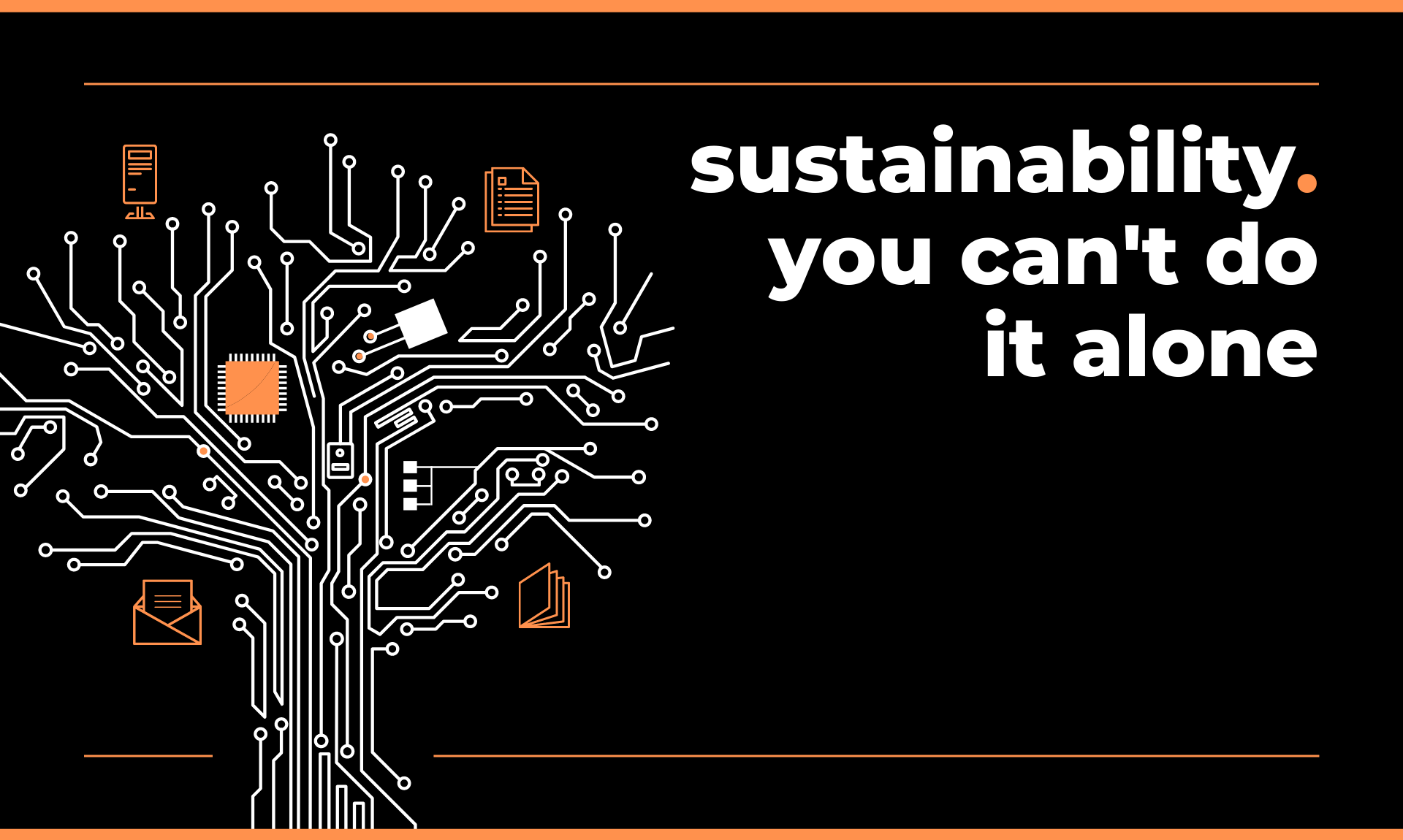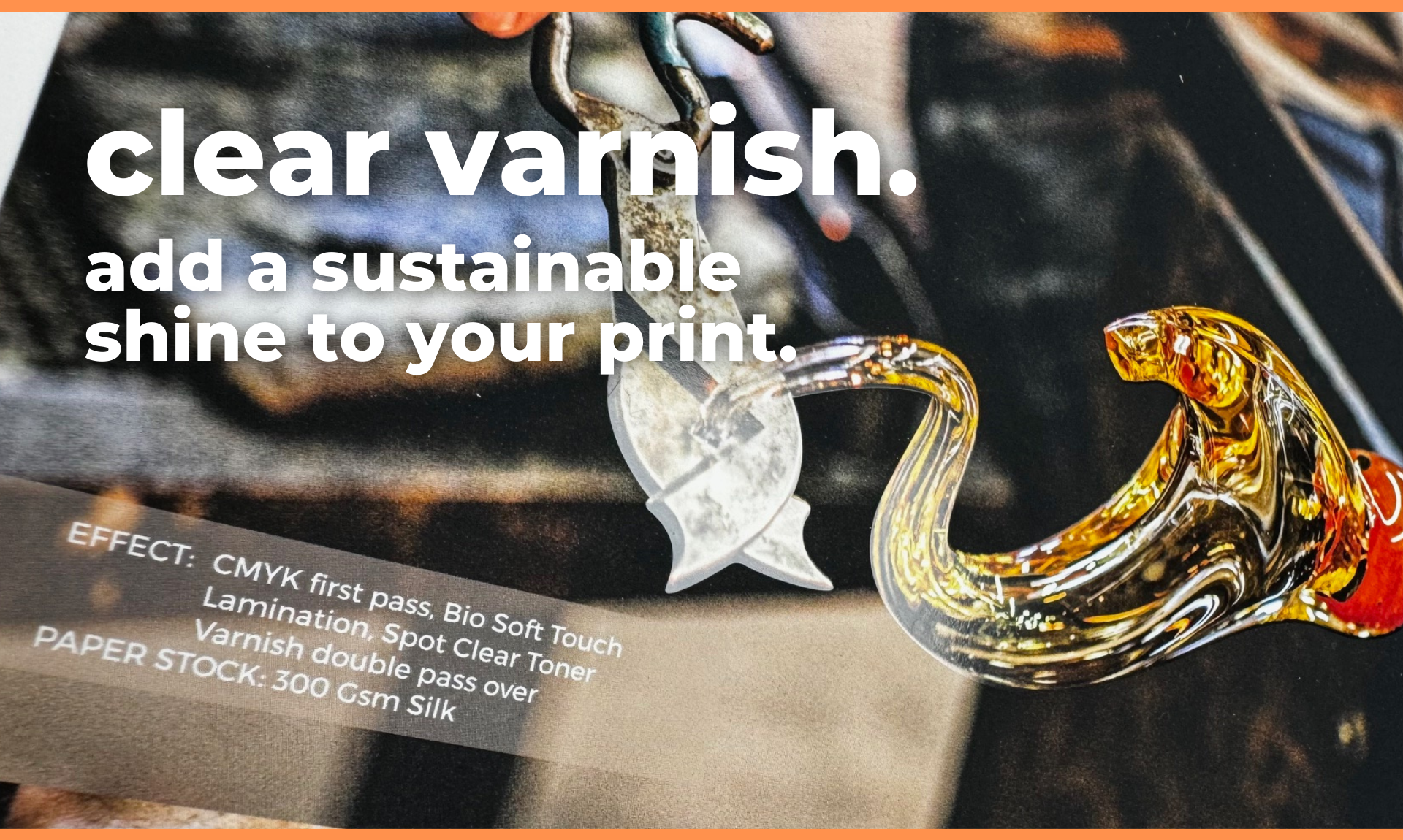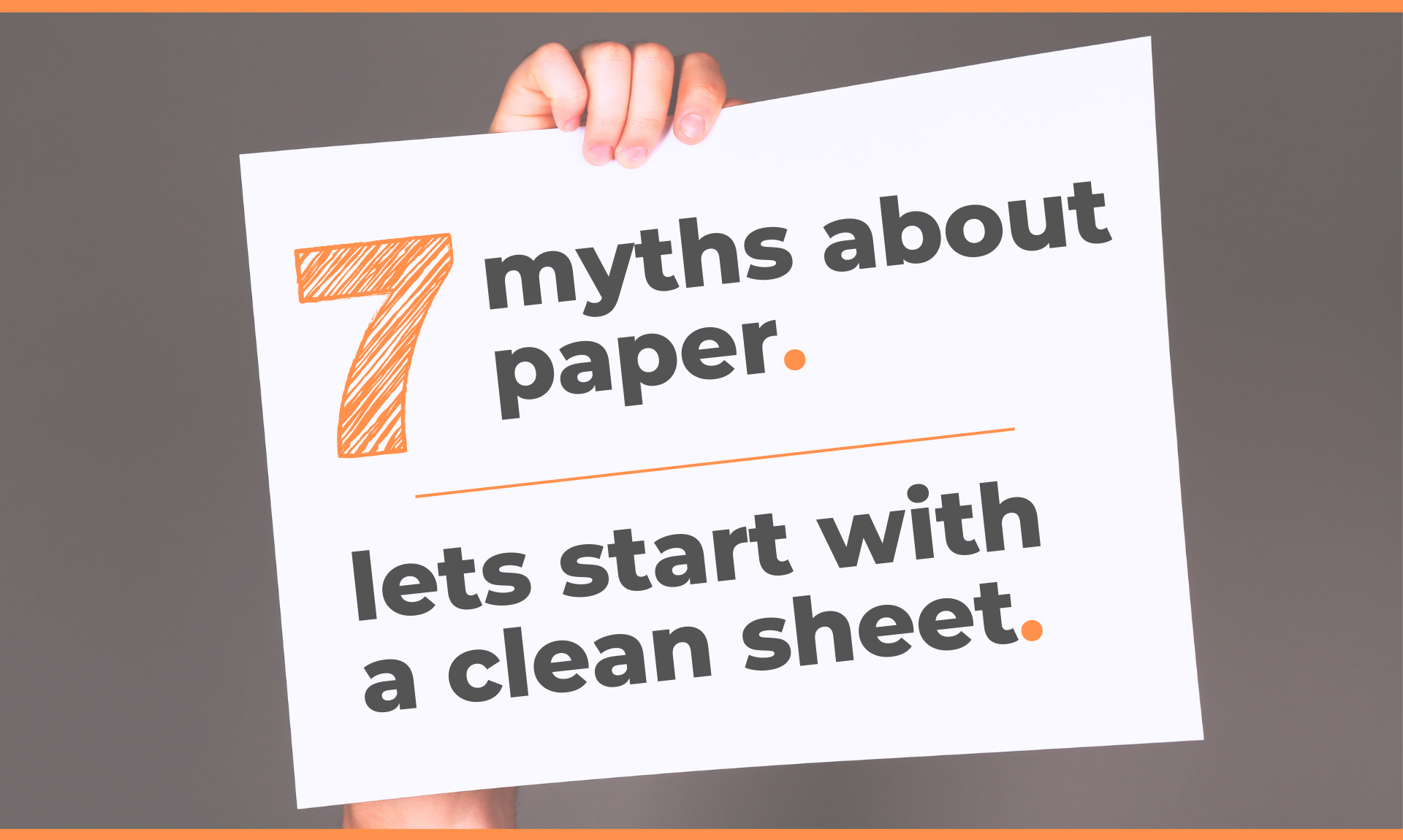Sustainability – you can’t do it alone. That was the theme of a talk our MD Dave Gibbons delivered recently at the Print & Digital Innovations Summit earlier this month. And as it generated a fair bit on interest from those who attended the summit (thankfully!), we thought we’d share the contents of Dave’s talk with you here.
So in his own inimitable words, let’s get started.
Sustainability has to be an approach
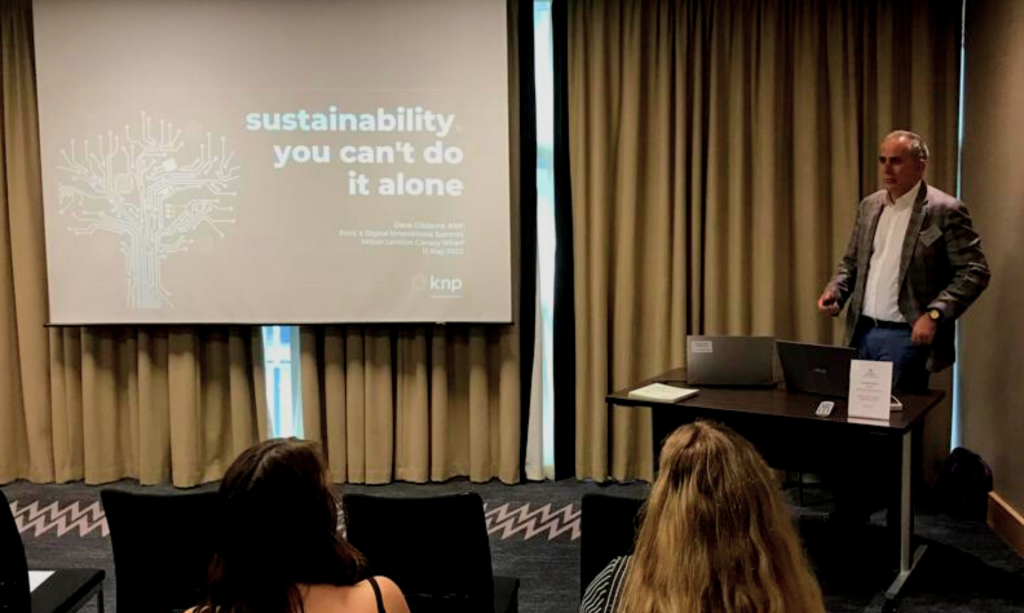
First and foremost, whatever your product, range or service, you can’t just say that’s sustainable because you can recycle it or it’s made from reclaimed materials. That statement doesn’t hold true and the impact is diminished if you operate with an inefficient means of production. Or the suppliers you work with aren’t doing their bit to be more sustainable.
Sustainability has moved to the very top of every business’s agenda – your customers are taking more notice. And importantly, consumers are now demanding it of the brands they buy. With all of this in creased importance and focus, people are going to ask you:
- What are you doing to become more environmentally responsible?
- In what ways are you improving how you operate?
It’s undeniable you’re going to face greater and greater scrutiny. So you have to look at everything. If you don’t look at every aspect of your business, you’ll suffer the consequences. People will call you out. We see it already, and it’s going to happen more and more. And to more and more companies.
And as you do look at every aspect of your business, this has to include your supply chain. We don’t operate in isolation and, in terms of sustainability, you aren’t taking it seriously if you look at yourself but not at the relationships you have.
Throughout the business
So what does sustainability as an approach mean. We’ve been delivering sustainable print for 15+ years. But it’s been a steady journey that’s seen us become more and more sustainable over time. It’s a journey every business has to go on.
For us it started out with using FSC paper (more about that shortly). Then, through doing our research, we introduced vegetable based inks to remove harmful chemicals from the print process. Next we looked at how much of the print process we could recycle. We now recycle all printing plates, all lamination waste and our toners. And any waste paper that’s left from a print job is picked up by a partner that recycles it into packaging.
We’ve also installed electric car charging points for customers & staff. And we encourage ride sharing.
All of this takes place in a building that’s now carbon neutral thanks to 600 rooftop solar panels that generate 154,000 units of energy and power all 28,000 sq. ft. We’ve actually given 35,000 units back to the grid!
But one of the most significant things we’ve done has been to work with the Woodland Trust to plant trees and remove CO2 from the atmosphere. Since 2011 we’ve helped raise over £1.7m, plant over 520k trees and capture over 100,00 tonnes of CO2. To give you an idea of how much CO2 that is, it’s as heavy as 21bn sheets of A4 paper.
And looking at our own partners, our paper suppliers are selected based on location to reducing the number and length of journeys made.
Investing to improve sustainability
Another significant thing we’ve done is look at our plant and machinery as well as our processes. Print technology continues to improve massively. Presses, whether traditional litho or digital are becoming more and more efficient and in turn more environmentally friendly.
But it’s a huge commitment. In the last 2 years we’ve invested well over £390,000 to offer a better service and be more cost-effective for our clients by installing state of the art machinery:
- Xerox Iridesse digital print production press
- Digital die cutter
- Digital variable foiler
But every new investment we’ve made has also had to make us more environmentally friendly. Or we haven’t made it.
Using more digital machinery, and bringing more services in-house reduces time, reduces materials and removes additional journeys between ourselves and other suppliers.
This is what a business needs to do. As I say, it can’t stop at your product or service. It’s root and branch.
This commitment to investing in the right plant and machinery, and the Xerox Iridesse in particular, has delivered the following improvements for us:
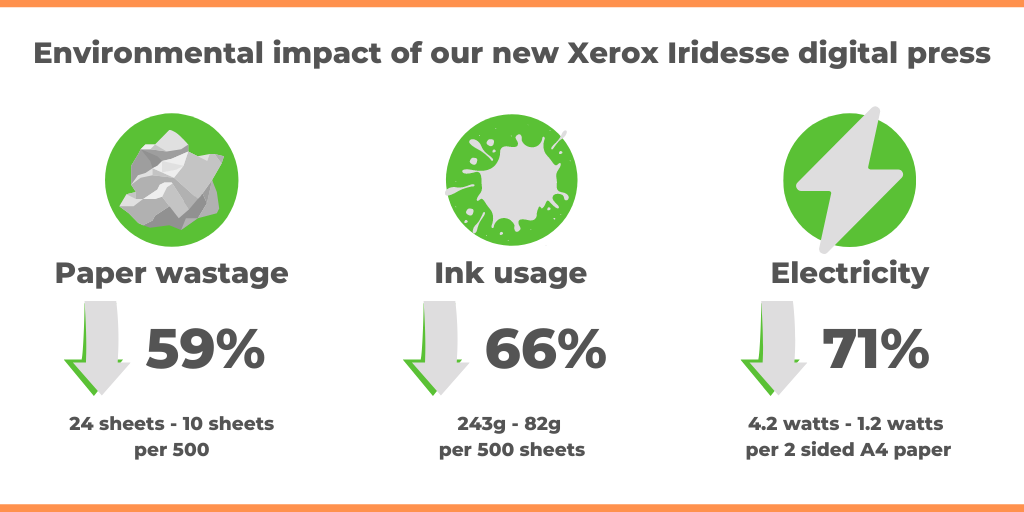
What should you look for in a sustainable partner
So as you start or continue your journey to becoming more environmentally responsible, and you try to lower your impact, what can you look for. Well, in the print world you can continue to work with and use print confidently if you partner with a supplier that can demonstrate to you clear actions. Two key actions that are a must are:
- Using FSC paper
- Being ISO14001 certified
And if you needed re-assurance about continuing to use print, for every tree used in the production of one of our print jobs, we’re planting four.
What does FSC mean?
Returning to FSC which I mentioned earlier. FSC (Forest Stewardship Council) paper means you’re buying and using paper that’s sourced from sustainably managed forests. But it’s important to know exactly what that means, and why it’s so important. It’s not just about the paper, FSC forests:
- Protect animal habitats
- Maintain biodiversity
- Protect old growth trees and ensure zero deforestation
- They protect the rights of indigenous people
- And ensure a fair wage and safe working conditions
What does ISO14001 mean?
ISO14001 is the international standard for environmental management systems (EMS). It’s the principal standard specifying the requirements for the formulation and maintenance of an EMS. Meaning it helps control and reduce our environmental impact and ensures legal compliance.
Interrogate your supplier
As I wrap up, thanks for staying with me, and I hope you’ve found it interesting. The last thing I’d leave you with, which is relevant not just for print but for every aspect of your business as, I hope, you strive to reduce your impact on the environment, is interrogate your suppliers.
Because you can’t do it on your own. You need their help if you’re to truly become a more environmentally responsible business. So don’t be afraid to ask:
- How do you operate?
- What do you use to help you deliver your products or services?
- Can you assess the impact they have on the environment?
- What are your suppliers doing to help you?
Dig deep to get the answers that help you work with the right partners.
Want to talk in more depth?
If you found this interesting and want to chat with us about our sustainable ecoprint solutions helping you become more environmentally responsible, we’re here and we’d love to help. Give us a shout.


